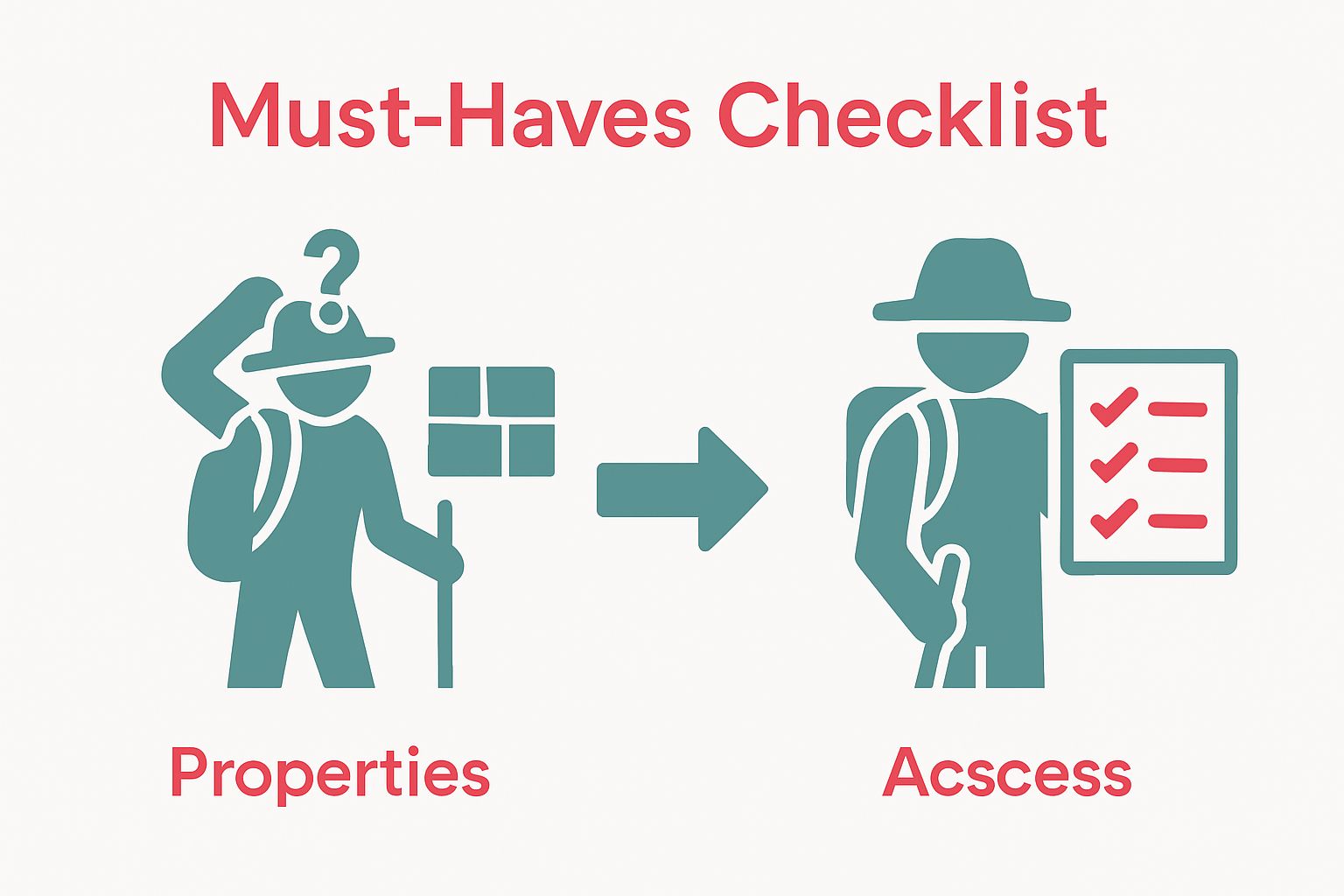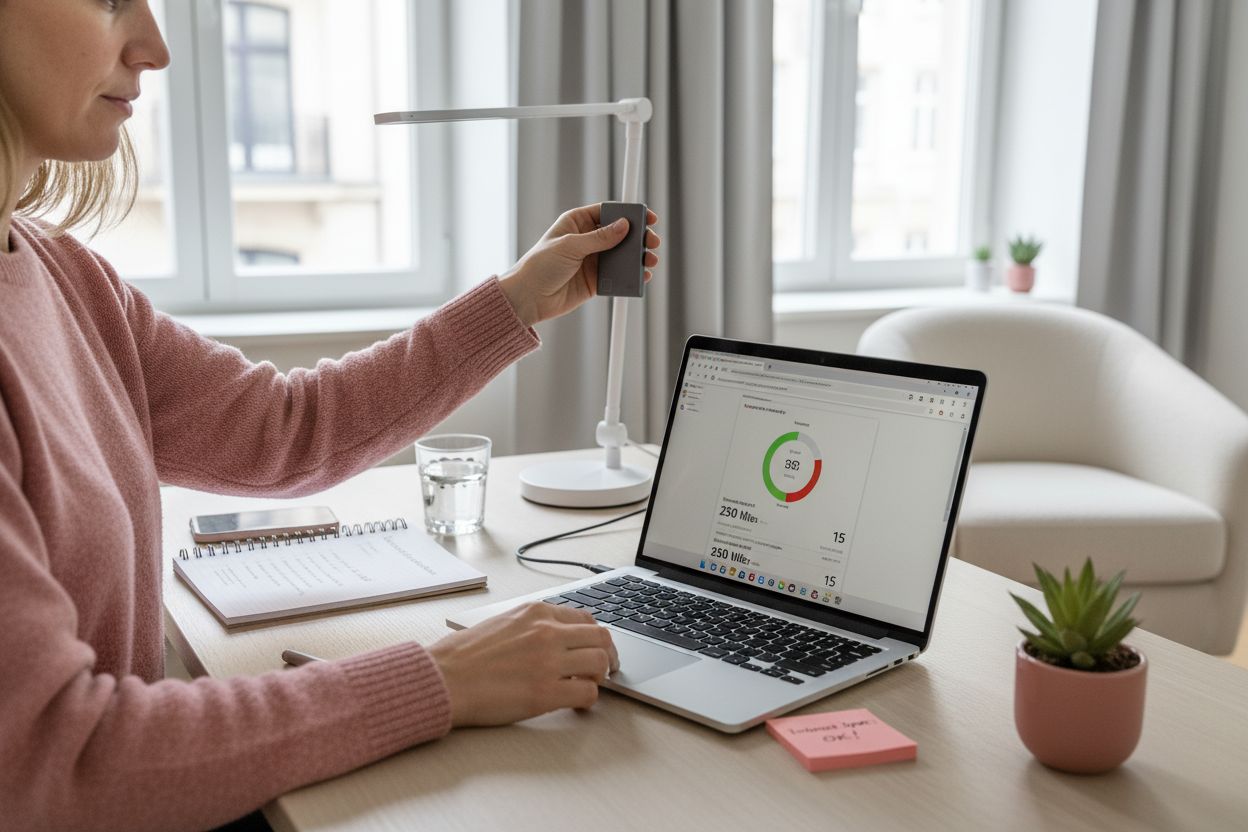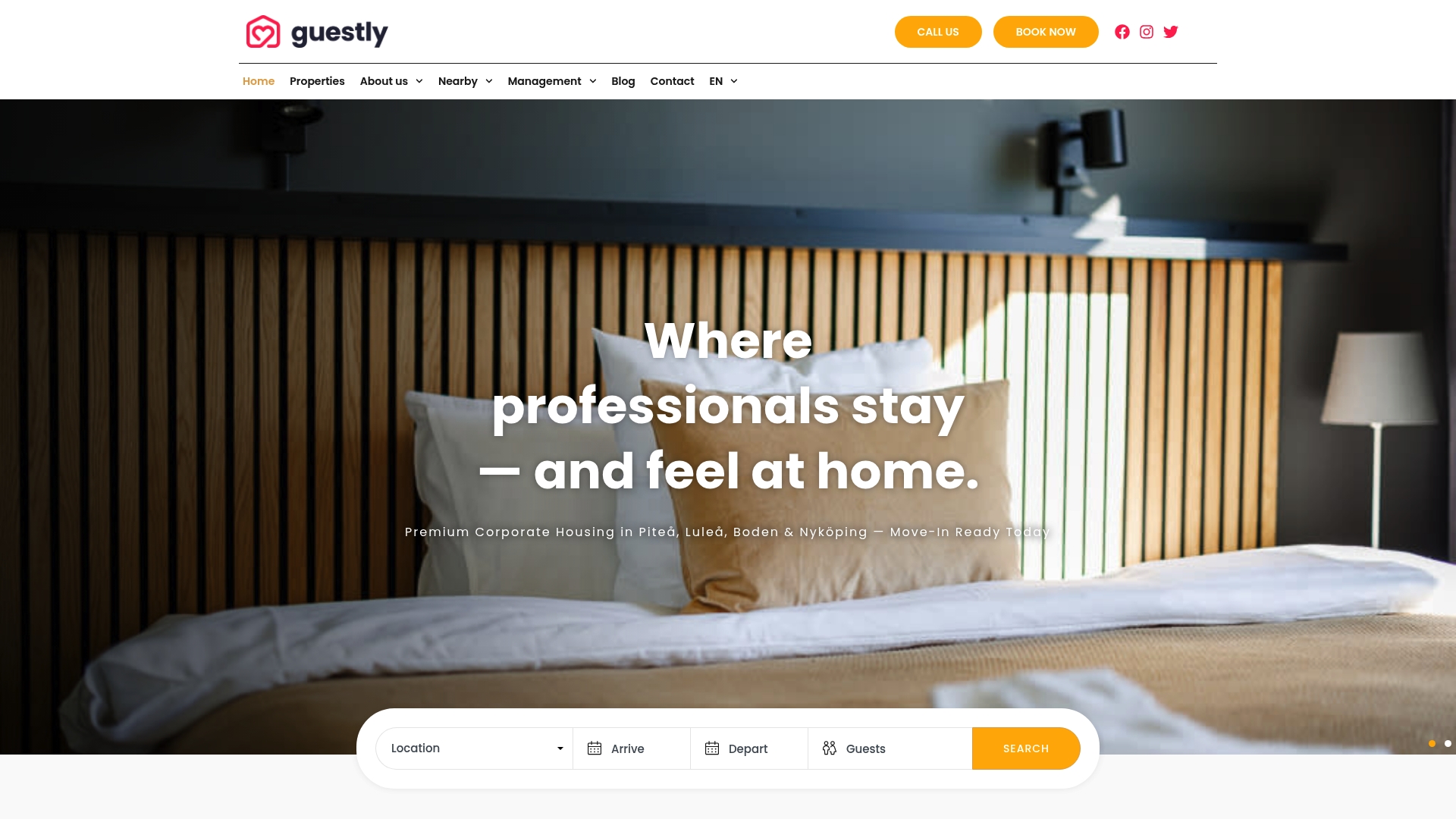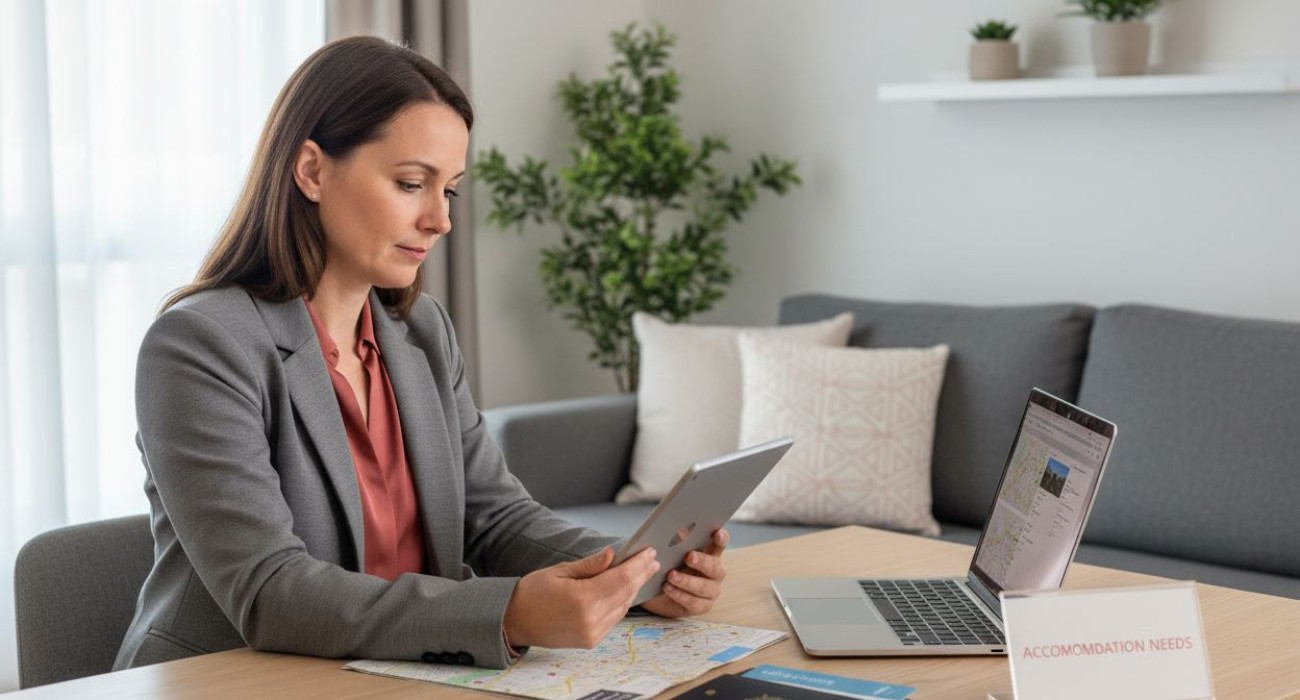Finding the perfect temporary housing for a work trip can feel more complex than planning the work itself. Research shows that the right accommodation can increase work trip productivity by up to 30 percent. Surprising, right? Most travellers obsess over locations and commute, yet the real secret comes down to details like workspace setup, internet reliability, and even the quality of communication with property owners. These unexpected factors can turn short-term stays into powerful support systems for your professional goals.
Table of Contents
- Step 1: Assess Accommodation Needs And Preferences
- Step 2: Research Suitable Properties In Target Locations
- Step 3: Communicate Requirements With Property Owners
- Step 4: Evaluate And Select The Best Options
- Step 5: Finalise Booking And Confirm Arrangements
- Step 6: Review Stay For Quality And Improvements
Quick Summary
| Key Point | Explanation |
|---|---|
| 1. Assess accommodation needs thoroughly | Understanding workspace and personal requirements is crucial for effective housing selection during work trips. |
| 2. Research properties actively | Use professional platforms for detailed insights, verify amenities, and ensure accommodations meet specific work needs. |
| 3. Communicate requirements clearly | Establish clear expectations and understanding with property owners regarding your needs for a successful stay. |
| 4. Evaluate options systematically | Develop a weighted scoring system to objectively compare accommodation options based on key professional criteria. |
| 5. Review your stay for improvements | Conduct structured assessments post-stay to refine future accommodation decisions and provide constructive feedback. |
Step 1: Assess Accommodation Needs and Preferences
Choosing the right temporary housing requires a thoughtful approach that balances professional requirements with personal comfort. Before selecting your accommodation, you need a comprehensive understanding of your specific work trip needs. This initial assessment serves as the foundation for finding a space that supports both your professional performance and personal well-being.
Work Location and Proximity Considerations
Begin by mapping your primary work location and determining optimal proximity. Evaluate the distance between potential accommodations and your workplace, considering transportation options and commute times. Proximity is not just about physical distance but about creating a seamless workflow. A location within reasonable travel range reduces daily stress and maximizes your productive hours. Optimal accommodation selection directly impacts your overall work trip experience and personal efficiency.
Your assessment should include detailed considerations such as public transit routes, parking availability, and potential walking or cycling paths. Some professionals prefer accommodations with direct transportation links, while others might prioritize a quiet residential area with a slightly longer commute. Understanding these personal preferences helps narrow your housing options effectively.
Essential Amenities and Workspace Requirements
Beyond location, examine the specific amenities and workspace requirements necessary for your work trip. Professional travelers need more than just a sleeping space they require a functional environment that supports their professional responsibilities. Look for accommodations with dedicated workspace areas, reliable high-speed internet, adequate electrical outlets, and quiet zones for video conferences or focused work.
Consider creating a personal checklist that includes non-negotiable requirements.
 This might involve specifications like:
This might involve specifications like:
-
Stable and fast internet connection
-
Ergonomic workspace or desk
-
Adequate lighting for professional tasks
-
Proximity to cafes or coworking spaces
-
Quiet environment for concentrated work
By meticulously assessing your needs upfront, you transform temporary housing from a mere stopover into a strategic support system for your professional objectives.
 Read more about selecting optimal serviced apartments to refine your approach and ensure your accommodation truly meets your work trip requirements.
Read more about selecting optimal serviced apartments to refine your approach and ensure your accommodation truly meets your work trip requirements.
Step 2: Research Suitable Properties in Target Locations
Researching suitable properties demands a strategic and comprehensive approach that goes beyond simple online browsing. This step transforms your accommodation search from a passive activity into an active, targeted investigation designed to find the perfect temporary housing solution for your work trip.
Digital and Professional Research Strategies
Begin your research by leveraging multiple channels to gather comprehensive information. Professional networks, corporate housing platforms, and specialized accommodation services offer nuanced insights that generic booking websites cannot provide. Detailed neighborhood analysis plays a critical role in understanding the broader context of potential accommodations.
Utilise professional platforms and aggregators that cater specifically to business travelers. These resources often include detailed property descriptions, amenity breakdowns, and verification systems that traditional rental platforms might lack. Look for platforms that offer transparent reviews from other professional travelers, giving you authentic insights into the actual living experience.
Verification and Comprehensive Property Assessment
Evaluating potential properties requires a methodical approach. Beyond basic amenities, examine the property’s infrastructure, technological capabilities, and alignment with your professional requirements. Critical verification points include confirming internet speed, checking workspace ergonomics, and understanding the property’s proximity to essential services.
Develop a systematic property assessment framework that includes:
-
Detailed photographic evidence of workspace areas
-
Verified internet connectivity specifications
-
Proximity to public transportation
-
Safety and security features
-
Noise level assessments
Remember that thorough research minimises potential disruptions during your stay. By investing time in comprehensive property investigation, you create a foundation for a productive and comfortable work trip experience.
To support your evaluation process, here is a checklist table summarising the key criteria to verify when assessing temporary housing options for work trips.
| Verification Criteria | What to Check | Why It Matters |
|---|---|---|
| Workspace functionality | Dedicated area, ergonomic furniture, lighting | Supports productive work and minimises distractions |
| Internet connectivity | Confirm bandwidth, stability, speed | Enables video calls and efficient online tasks |
| Proximity to workplace or transport | Travel time, public transit, parking availability | Reduces commute, increases flexibility and convenience |
| Safety and security features | Locks, building security, neighbourhood safety | Ensures peace of mind and risk mitigation |
| Noise levels | Quiet zones, soundproofing, area activity | Facilitates focused work and restful downtime |
| Property management responsiveness | Communication speed, support availability | Provides timely help if issues arise |
| Amenity infrastructure | Electrical outlets, kitchen, laundry, etc. | Supports day-to-day comfort and professional lifestyle |
Step 3: Communicate Requirements with Property Owners
Effective communication with property owners transforms your temporary housing experience from a transactional arrangement to a collaborative partnership. This step is crucial in establishing clear expectations, understanding specific property guidelines, and ensuring your professional needs are fully addressed before and during your stay.
Preparing Comprehensive Communication
Begin by compiling a detailed document outlining your specific requirements, work schedule, and potential unique needs. Professional clarity is key when discussing your accommodation expectations. This approach demonstrates respect for the property owner and helps prevent potential misunderstandings. Interpersonal communication research highlights the importance of transparent dialogue in creating successful temporary housing experiences.
Your communication should cover practical aspects such as arrival times, potential late check-ins related to work commitments, specific workspace requirements, and any technological infrastructure needs. Describe your professional context briefly to help property owners understand the specific nature of your stay and potentially offer tailored support.
Establishing Mutual Understanding and Expectations
During your communication, focus on creating a comprehensive mutual understanding that goes beyond standard rental agreements. Request detailed information about the property’s features, including internet bandwidth, workspace ergonomics, noise levels, and any potential limitations. Be transparent about your work requirements and any specific accommodations you might need.
Create a communication checklist that includes:
-
Specific workspace requirements
-
Internet connectivity specifications
-
Preferred communication methods
-
Emergency contact protocols
-
Potential schedule flexibility needs
Remember that professional, respectful communication sets the foundation for a smooth temporary housing experience. By articulating your needs clearly and listening to the property owner’s perspective, you create a collaborative environment that supports your professional objectives. Learn more about understanding accommodation benefits to enhance your approach to temporary housing communication.
Step 4: Evaluate and Select the Best Options
Evaluating and selecting the optimal temporary housing requires a strategic approach that balances objective criteria with personal professional needs. This critical step transforms your research into a focused decision-making process, ensuring your accommodation supports both your work requirements and personal comfort.
Systematic Comparative Analysis
Develop a structured evaluation matrix that goes beyond surface-level comparisons. Weighted scoring becomes your primary tool for objective assessment. Assign numerical values to key factors such as workspace quality, internet reliability, proximity to work location, and overall amenity infrastructure.
This methodical approach removes emotional bias and grounds your selection in quantifiable data.
Consider creating a scoring system where each critical requirement receives a weighted percentage. For instance, workspace functionality might receive 30% of total score, while location proximity could account for 25%. This numerical approach provides a clear, rational framework for comparing seemingly disparate accommodation options.
Decision-Making and Final Selection
Beyond numerical evaluation, incorporate nuanced considerations that cannot be easily quantified. Professional travelers understand that intangible factors like property management responsiveness, subtle environmental qualities, and potential for focused work are equally important. Pay attention to communication quality during your initial interactions with property owners, as this often indicates the level of support you might receive during your stay.
Your final selection criteria should include:
-
Comprehensive workspace functionality
-
Technological infrastructure reliability
-
Property management professionalism
-
Overall cost-effectiveness
-
Alignment with professional performance needs
Remember that selecting temporary housing is more than a transaction it is an investment in your professional effectiveness. Trust your comprehensive research and systematic evaluation process. Explore our detailed guide on selecting serviced apartments to refine your decision-making strategy and ensure you choose accommodation that truly supports your work objectives.
Step 5: Finalise Booking and Confirm Arrangements
Finalising your temporary housing booking represents the crucial moment where careful research and communication transform into a concrete travel arrangement. This step demands meticulous attention to detail, ensuring every aspect of your accommodation is precisely documented and understood before your arrival.
Comprehensive Documentation and Verification
Professional thoroughness defines successful booking finalisation. Compile a comprehensive documentation package that includes all communication records, specific agreements, and property details. Detailed verification procedures are essential in creating a transparent and secure booking process. Request a formal confirmation document that explicitly outlines check-in procedures, specific workspace configurations, internet specifications, and any additional services or amenities discussed during previous communications.
Prepare digital and physical copies of all documentation. Ensure these records include contact information for property management, emergency protocols, and any special arrangements negotiated during your initial discussions. This comprehensive approach provides a safety net and clear reference point throughout your stay.
Pre-Arrival Coordination and Logistics
Transition from booking to arrival requires strategic coordination. Confirm precise logistical details such as key collection methods, access protocols, and specific check-in timing. Communicate your expected arrival time and any potential variations due to work commitments. Professional accommodations understand the dynamic nature of business travel and often provide flexible arrangements.
Your final booking confirmation checklist should include:
-
Detailed written confirmation of all agreed terms
-
Digital copies of booking documents
-
Emergency contact information
-
Specific workspace and technology setup details
-
Agreed payment and billing procedures
Remember that successful booking finalisation is more than a transaction it is establishing a professional relationship with your temporary accommodation provider. Read our guide on essential property handover procedures to ensure a smooth transition and set the foundation for a productive stay.
Step 6: Review Stay for Quality and Improvements
Comprehensive review of your temporary housing experience transforms a single stay into a strategic learning opportunity for future professional travel. This final step is not merely about reflection but about developing a systematic approach to continuously improving your accommodation selection and experience.
Structured Performance Assessment
Professional evaluations require more than casual observations. Immediately after your stay, conduct a structured performance assessment that objectively measures your accommodation against the original requirements and expectations. Create a detailed documentation that captures both quantitative metrics and qualitative insights. Precise record-keeping allows you to build a personal knowledge base that refines your temporary housing selection process for future trips.
Consider developing a standardised evaluation framework that includes specific scoring criteria for workspace functionality, technological infrastructure, location convenience, and overall professional support. This approach converts subjective experiences into measurable data points that can guide future decision-making.
Feedback and Continuous Improvement
Constructive feedback is a critical component of the review process. Communicate your experience directly with the property management, highlighting both positive aspects and areas for potential improvement. Systematic post-stay evaluations demonstrate your commitment to professional standards and contribute to broader industry improvements in temporary housing services.
Your comprehensive review should include:
-
Detailed workspace performance assessment
-
Technological infrastructure reliability report
-
Location and commute effectiveness analysis
-
Property management communication quality
-
Overall professional comfort rating
Remember that each temporary housing experience is an opportunity to refine your approach. By maintaining a disciplined review process, you transform temporary accommodations from transactional spaces into strategic professional support environments. Learn more about understanding accommodation benefits to enhance your future travel experiences.
Discover Work-Ready Stays That Raise Your Standards
Struggling to align temporary housing with the real demands of work trips is more than an inconvenience. The article explored the challenges of finding accommodation that supports performance, ensures comfort, and removes the friction that disrupts focus. From workspace functionality and reliable internet to seamless communication and stress-free arrivals, each step detailed in the guide points to one truth: the right environment makes all the difference.

Stop compromising on your professional needs. Find a home that lets you concentrate on your goals, not the logistics.
Below is an overview table of the main steps for optimising temporary housing for work trips, including the primary goal and typical activities for each phase.
| Step | Purpose | Key Activities |
|---|---|---|
| 1. Assess Needs and Preferences | Understand work and personal requirements | Evaluate location, list amenities, create personal checklist |
| 2. Research Suitable Properties | Identify optimal accommodation options | Use digital platforms, verify listings, conduct assessment |
| 3. Communicate with Property Owners | Establish clear expectations and special needs | Prepare detailed requirements, discuss logistics, clarify |
| 4. Evaluate and Select Best Options | Objectively compare options and make a decision | Scoring, analyse workspace, review professionalism |
| 5. Finalise Booking Arrangements | Secure the booking with confirmed documentation | Book, confirm details, arrange check-in and logistics |
| 6. Review Stay and Provide Feedback | Improve future stays and help property management | Assess experience, document performance, offer feedback |
Frequently Asked Questions
How can I assess my accommodation needs for work trips?
To assess your accommodation needs, consider your work location, required amenities, and personal preferences. Create a checklist that includes factors like internet speed, workspace requirements, and the proximity to your workplace, ensuring it fits within your professional needs.
What should I include in my property research for temporary housing?
Include details such as internet connectivity, workspace ergonomics, and safety features when researching temporary housing. Use a systematic approach to evaluate properties based on a scoring system for each critical requirement to make an informed decision.
How do I effectively communicate my needs to property owners?
Communicate your needs clearly by preparing a detailed document outlining your requirements, work schedule, and any specific requests. Articulate aspects like check-in times and workspace needs, ensuring both parties have mutual understanding and expectations.
What criteria should I use to evaluate temporary housing options?
Use objective criteria such as the quality of workspace, internet reliability, and property management professionalism to evaluate your options. Develop a scoring matrix to help streamline your decision-making process and ensure that your final choice supports your professional needs.
How can I ensure a smooth booking finalisation process?
To ensure smooth booking finalisation, compile a comprehensive documentation package that includes all agreements and details. Confirm logistics such as check-in timings and key collection methods to establish clear arrangements before your arrival.
What steps should I take after my stay to improve future temporary housing experiences?
After your stay, conduct a structured performance assessment to evaluate the property against your original requirements. Document your findings, and provide constructive feedback to property management to help refine your accommodation selection process for future trips.



